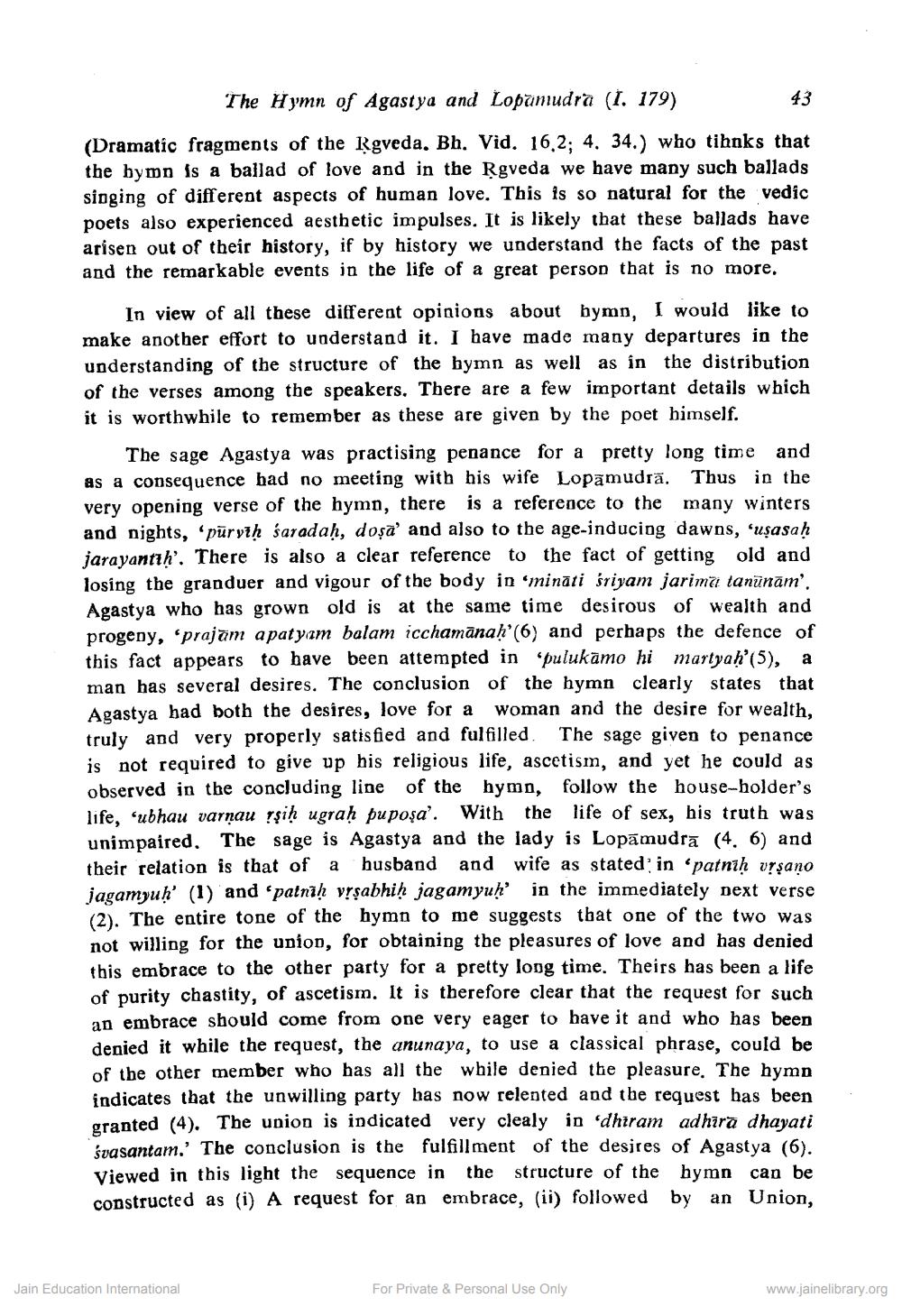________________
The Hymn of Agastya and Lopamudra (İ. 179)
43
(Dramatic fragments of the Rgveda. Bh. Vid. 16.2; 4. 34.) who tihnks that the bymn is a ballad of love and in the Rgveda we have many such ballads singing of different aspects of human love. This is so natural for the vedic poets also experienced aesthetic impulses. It is likely that these ballads have arisen out of their history, if by history we understand the facts of the past and the remarkable events in the life of a great person that is no more.
In view of all these different opinions about hymn, I would like to make another effort to understand it. I have made many departures in the understanding of the structure of the hymn as well as in the distribution of the verses among the speakers. There are a few important details which it is worthwhile to remember as these are given by the poet himself.
The sage Agastya was practising penance for a pretty long time and as a consequence had no meeting with his wife Lopāmudră. Thus in the very opening verse of the hymn, there is a reference to the many winters and nights, pūrviḥ śaradaḥ, doșă' and also to the age-inducing dawns, 'uşasah jarayantih'. There is also a clear reference to the fact of getting old and losing the granduer and vigour of the body in 'mināti śriyam jarima tanünām'. Agastya who has grown old is at the same time desirous of wealth and progeny, 'prajām apatyam balam icchamānah'(6) and perhaps the defence of this fact appears to have been attempted in "pulukamo hi martyah'(5), a man has several desires. The conclusion of the hymn clearly states that Agastya had both the desires, love for a woman and the desire for wealth, truly and very properly satisfied and fulfilled. The sage given to penance is not required to give up his religious life, ascetism, and yet he could as observed in the concluding line of the hymn, follow the house-holder's life, “ubhau varnau îşih ugraḥ pupoşa'. With the life of sex, his truth was unimpaired. The sage is Agastya and the lady is Lopamudrā (4. 6) and their relation is that of a husband and wife as stated in ‘patnih vrşano jagamyuh' (1) and 'palnih vrşabhih jagamyuh' in the immediately next verse (2). The entire tone of the hymn to me suggests that one of the two was not willing for the union, for obtaining the pleasures of love and has denied this embrace to the other party for a pretty long time. Theirs has been a life of purity chastity, of ascetism. It is therefore clear that the request for such an embrace should come from one very eager to have it and who has been denied it while the request, the anunaya, to use a classical phrase, could be of the other member who has all the while denied the pleasure. The hymn indicates that the unwilling party has now relented and the request has been granted (4). The union is indicated very clealy in 'dhiram adhira dhayati svasantam.' The conclusion is the fulfillment of the desires of Agastya (6). Viewed in this light the sequence in the structure of the hymn can be constructed as (i) A request for an embrace, (ii) followed by an Union,
Jain Education International
For Private & Personal Use Only
www.jainelibrary.org




